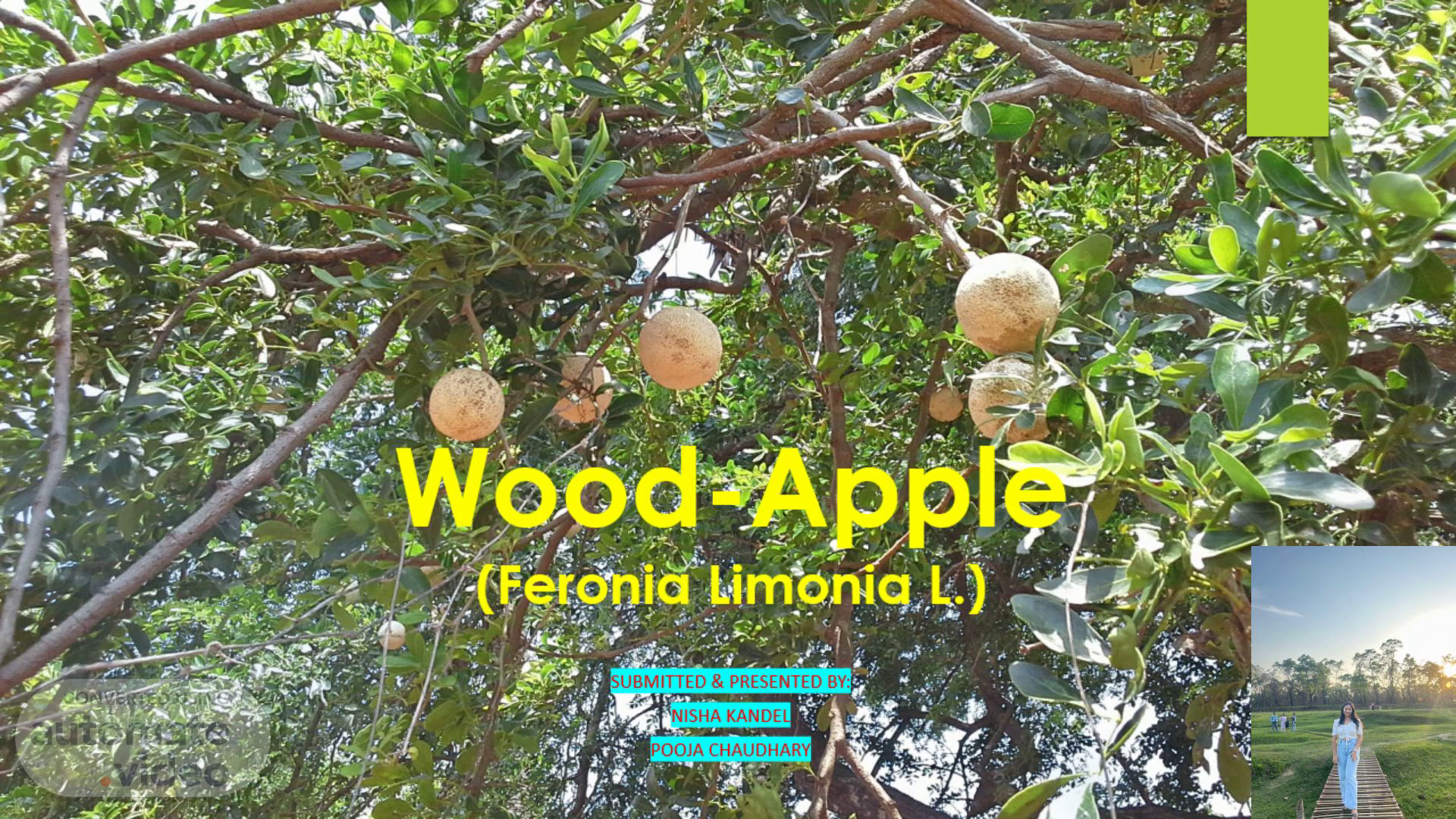Scene 1 (0s)
Wood-Apple (Feronia Limonia L.). Submitted & Presented by: Nisha Kandel Pooja Chaudhary.
Scene 2 (10s)
Origin and Distribution. Wood-apple, scientifically known as Feronia Limonia L. is the only species within the monotypic genus Limonia. Common names for the species in English include elephant apple, monkey fruit, curd fruit and kath bel. It is native and common in wild and dry plains of India, Sri-Lanka and Ceylon. It is also frequently grown throughout southeast Asia in northen-Malaya..
Scene 3 (31s)
Introduction. Family: Rutaceae Botanical Name: Feronia Limonia L. Common Name: Bael Chromosome (2n)= 18.
Scene 4 (42s)
Morphology. The slow growing tree is erect, with a few upward reaching branches bending outward near the summit where they are subdivided into slender branchlets drooping at the tips. They are usually bisexual. The fruit is round to oval (5-12.5 cm wide), with a hard woody, greyish-white, scurfy rind, about 6 mm thick. The pulp is brown, mealy, odorous acid or sweetish with numerous small, white seeds scattered through it..
Scene 5 (1m 6s)
Uses. Nutritional Value: According to the National Institute of Nutrition’s book, “Nutritive Value of Indian Foods,” wood apples contain the following values per 100g:.
Scene 6 (1m 31s)
Uses. Medicinal Value: Cures digestive problems Provides relief from gastric ulcers and removes toxins Helps to boost energy level Good for pregnant women Controls diabetes and prevents liver disorders Good for skin and hair health Relieves joint pain and swelling Cures jaundice.
Scene 7 (1m 46s)
Uses. Religious Value: Bael is sacred tree. The three leaves together of wood apple is considered as trident (Trisul), the emblem of Lord Shiva People pay tribute of Lord Shiva in his temple by offering Bael leaves, commonly called Belpatra.
Scene 8 (2m 2s)
Climate. The tree grows up to an elevation of 1,500 ft (450 m) in the western Himalayas. It is said to require a monsoon climate with a distinct dry season..
Scene 9 (2m 24s)
Variety. There are two forms: One with large, sweetish fruits One with small, citrus fruits.
Scene 10 (2m 50s)
Propagation. The most common and simplest method of raising the wood apple plants is from seeds. Since the seedlings do not carry true-to-type characters which leads to immense variation in yield and fruit characters (seeding will not bear at least for 15 years) Other method of multiplication are: By root cuttings By budding Air layering.
Scene 11 (3m 19s)
Orchard Management. Manuring is not practiced but it will be benefitted if manures at the rate of about 25kg FYM or compost per tree the beginning of monsoon. It will help in increasing fruit size and quality..
Scene 12 (3m 53s)
Harvesting and Post Harvest Operation. The fruit is tested for maturity by dropping onto a hard surface from a height of 1 ft (30 cm). Immature fruits bounce, while mature fruits do not. After harvest, the fruit is kept in the sun for 2 weeks to fully ripen. Budded plants come to bearing 3-4 years after planting. But to reach optimum productivity it will take about 10 years..
Scene 13 (4m 33s)
Disease and pest management and other post harvest problems.
Scene 14 (4m 57s)
Disease and pest management and other post harvest problems.
